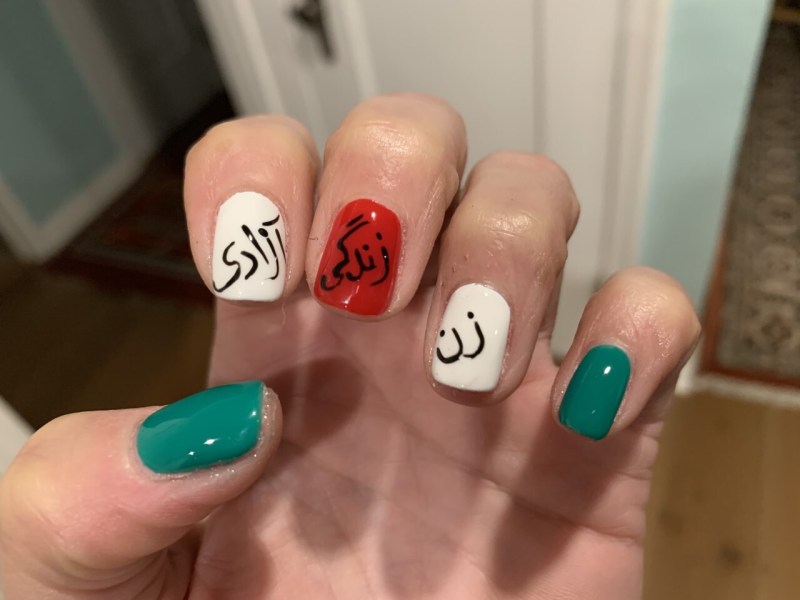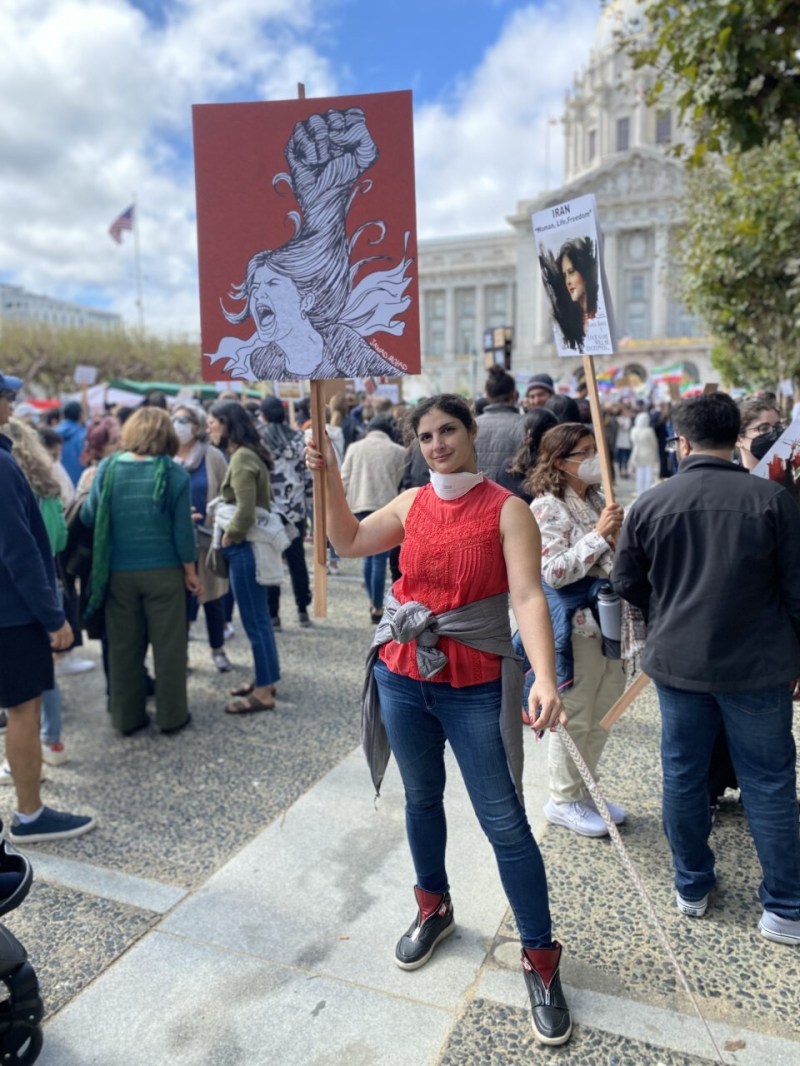In the months since the death of 22-year-old Kurdish Iranian Mahsa Zhina Amini, Arghavan Salles’s M.D. ’06 Ph.D. ’14 life can best be summarized by a meme she saw online: “Wake up in the morning: think about Iran. Attend Zoom meeting: think about Iran. Eat lunch: think about Iran.”
On Sept. 16, Amini died in police custody following her arrest by Iran’s morality police for failing to wear a full head-covering. Though police continue to deny responsibility, signs of beating and bruising on Amini’s body along with witness reports that she was beaten by officers, sparked widespread protests across Iran.
Protests have been met by a brutal state-wide crackdown on dissent. Members of Stanford’s Iranian community spoke to The Daily about anxiously watching the conflict unfold, hoping this movement will lead to a freer Iran, while fearing for the safety of loved ones.
“It has been practically all-consuming,” Salles said, who, between her roles as a School of Medicine clinical associate professor and Clayman Institute for Gender Research senior research scholar, posts daily TikTok updates about protests, killings and arrests. Some of her posts have gained tens of thousands of views.
In the wake of Amini’s death, millions of Iranian women took to the streets. While women continue to lead these protests into their third month, the focus of the protests has expanded beyond demanding the equal treatment of women into broader calls to end suppression the Iranian people have endured for over 40 years at the hands of Iran’s government.
Iranian security forces have responded with a campaign of terror and violence, killing and arresting hundreds of protestors, and cutting off most of Iran’s communications with the outside world.
Security forces have carried out wide-scale atrocities such as the massacre at the prestigious Sharif University, where they fired guns indiscriminately at students and detained many more.
Iranian Studies Program Director Abbas Milani hears these stories of brutality and violence every day from those he knows in Iran. “What I hear from contacts I have, letters I receive is that ‘Yes, we are being brutalized, yes the regime is unleashing its violence on us, but we are not going to go back,’” Milani said.
According to Milani, while this protest movement is historic in its duration and involvement of all age groups and factions of Iranian society, its roots lie in Iran’s history.
“The brutal suppression, the killing of Mahsa Amini — she’s now become an icon, a global icon — isn’t a rare accident. It’s part of a historical process,” Milani said.
In the years following the Iranian Revolution of the late 1970s and the subsequent deposition of Iran’s Shah, right-winged, religious forces took over the country. “We went from a condition of having some criticism of the Iranian regime, of its authoritarianism, to a pseudo-totalitarian regime under Islamic clerical despotism,” Milani said.
After the regime established its rule, systematic oppression of women grew, including a strict new dress code which mandated hair coverage in public and permission from male family members before making decisions like leaving the country.
“You had, after 1980, the beginning of what can only be called gender apartheid in Iran where women were literally considered second class citizens in the Constitution,” Milani said.
Iranian women almost immediately pushed back against these laws, leading protests and acts of civil disobedience, in spite of government suppression of these acts of defiance.
Iranians also protested over economic downturn and government subversion of fair elections.
“A combustible situation existed, and you had an arrogant, male, misogynist leadership who is absolutely firm in his dogmatic approach and just didn’t listen to the people — that is a perfect recipe for the kind of eruption we had,” Milani said.
According to Milani, this current movement, which some call a revolution, is unique because through their sustained defiance, the women leading the cause have destroyed one of the main pillars of the Iranian regime’s governance: fear.
“This regime survives on fear, and women, essentially, gradually, and far more recently, but over the last 20-30 years, showed that you can fight this regime,” Milani said. “It’s not omnipotent. We the people are omnipotent.”
For Salles, this crisis has not only been emotionally heavy as she struggles to communicate with family back in Iran, but it has also brought up anger over the past 40 years. “We have a lot of sadness for what we’ve lost, which is, yes, the lives of people who have been murdered these last few weeks, but the regime has been murdering people the entire time,” Salles said.
“For those of us who are in the diaspora, we’ve lived the majority, sometimes all of our lives, away from our extended family,” Salles said, who immigrated to the U.S. with her mother at five years old.
Similarly to Salles, Romy McCarthy ’25 has lived her life at a distance from family in Iran. When McCarthy’s grandfather passed away, she could not leave England to say a final goodbye to him in Iran, so she and her mother settled for watching his funeral through Instagram Live.
McCarthy said her mother, who immigrated to the U.K. from Iran at age 10 and was rarely able to visit since, was particularly affected by the protests and violence.
“She’d literally be standing in front of the television being like ‘I want to go home,’” McCarthy said. “I could never imagine leaving my home country when I’m 10 years old and feeling displaced for the rest of my life.”
“For someone like my mom…it’s particularly you know [emotional], the real possibility that she could go home, and she could restart her life,” McCarthy said.
What has been particularly disheartening, however, for McCarthy and Salles is that this historic moment, until recently, was largely met with silence from Western media.
In early October, Salles told a friend she was going through a difficult time given all that was going on in Iran. “Oh, what’s been going on in Iran?” he responded.
For Salles, this conversation was not a reflection on her friend’s aloofness but a reflection of failures in coverage. “You have to be really looking for information about Iran to know what is happening,” Salles said.
Salles found herself sifting through information online and Instagram accounts, trying to determine what is accurate and what is not, and educating others through her social media. While in recent weeks she has seen Western news outlets increase their coverage of Iran, she remained perplexed as to why she felt responsible for finding information and fact-checking it.
“It just feels like nobody wants to talk about it because we’re so othered as a people that it doesn’t seem relevant to Americans,” Salles said. “Are we just not worthy, are our people not thought of as people?”

According to Milani, one cause of this silence is the false worry that criticizing Iran or supporting a movement against mandatory headscarves is Islamophobic.
“The variety of Islam that is in Iran is dogmatic, it’s misogynist, it is anti-modern,” Milani said. “Progressive forces in the West … should be able to say ‘this version of whatever it is, we condemn.’”
Vice Provost for Student Affairs Susie Brubaker Cole sent an Oct. 6 email to the community acknowledging the crisis in Iran and expressing admiration for bravery of the Iranian people. The email also offered mental health resources.
While McCarthy appreciated the email, she said the University could have done more to support Persian students. McCarthy said while the University may not be aware of her ties to Iran, other Iranian students she knows were also not personally contacted.
The Daily has reached out to the University for comment.
While she praised programming and support by the Iranian Studies Program, McCarthy said she feels frustrated by the lack of support from her peers. She recalled that when Russia invaded Ukraine in February, campus action was led by students and professors, something she had hoped to see again with the crisis in Iran.
Many Persian students on campus also cannot put themselves or their families at risk by speaking publicly about Iran, McCarthy said.
She, on the other hand, feels that she has nothing to lose — she no longer has any immediate family in Iran — and feels a responsibility to speak up. She encourages her peers to do the same.
“People are so educated here. We have the best resources. We’re in a safe space. We should be taking advantage of that to speak out and magnify the voices of these people in Iran who are literally risking their lives on the street,” McCarthy said.
